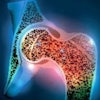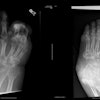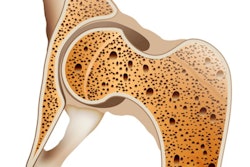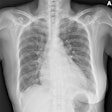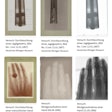New strategies are needed to ensure that interventional radiology staff in Europe are properly trained to protect themselves from radiation, according to Irish-led research.
In a survey of radiographers currently practicing across Europe and beyond, just under half reported having access to radiation protection training courses at their facilities, noted study lead Andrew England, PhD, a senior lecturer in medical imaging at University College Cork, and colleagues.
“Professional bodies, at national and international levels, should prioritize strategies for mandating such measures and implementing structured training programs,” the group wrote. The study was published on 21 June in the Journal of Medical Imaging and Radiation Sciences.
According to current literature, there is little evidence about radiation protection practices of interventional radiology (IR) and cardiology catheter laboratory (CCL) staff, explained England, who is president of the European Federation of Radiographer Societies, and his fellow authors.
To address this knowledge gap, the group conducted a cross-sectional study in the form of an online questionnaire, with participation advertised via online platforms and through email. A total of 178 responses were recorded with 130 (73%) suitable for analysis, they added.
Most respondents were female (n = 94) and were radiographers (n = 97). Among respondents, 30% (n = 39) had between one and five years of experience, followed by 25% (n = 33) having six to 10 years, and 19% (n = 24) had more than 20 years of experience.
Questions covered radiation protection training and protocols, the use of different types of lead shields, and other methods of minimizing radiation dose within practices.
The findings indicated that only 68 (53 %) had received radiation protection training. The majority received this in-house (n = 54) through their hospital or center, while the rest received it in their undergraduate or postgraduate degree courses, the group reported.
Other key findings included the following:
- 118 (98%) of respondents had departmental protocols in place for radiation protection.
- Radiology managers (n = 106, 82%) were most likely to contribute to such protocols.
- Lead apron shields were worn personally by 99% of respondents and by coworkers in 95% of cases.
“Prior radiation protection training, the awareness of ionizing radiation exposure, the use of radiation protection shields, and other protective tools are below the expected levels in IR and CCLs,” the group wrote.
Expected levels have been laid out in joint guidelines from the Society of Interventional Radiology and the Cardiovascular and Interventional Radiology Society of Europe, the researchers noted. The guidelines state that “all staff involved in the procedure should have a general knowledge of safe operating practices in a radiation environment and that adequate and relevant training programs should be provided for all levels of staff within the organization,” they noted.
The trend toward more minimally invasive procedures in the past few decades has resulted in an exponential growth in fluoroscopy-guided cardiology and interventional radiology (IR) procedures, the group noted. As these techniques are becoming more common, the adverse effects of radiation exposure to staff members have become a subject of major concern, the authors added.
Ultimately, this study builds on previous research on the subject, which has primarily focused on surveying radiation exposure issues among radiographers in individual countries, they wrote.
“This is the first study to investigate the knowledge, attitudes, and practice of radiation protection within IR departments and CCLs globally,” the group concluded.
The full study is available here.

